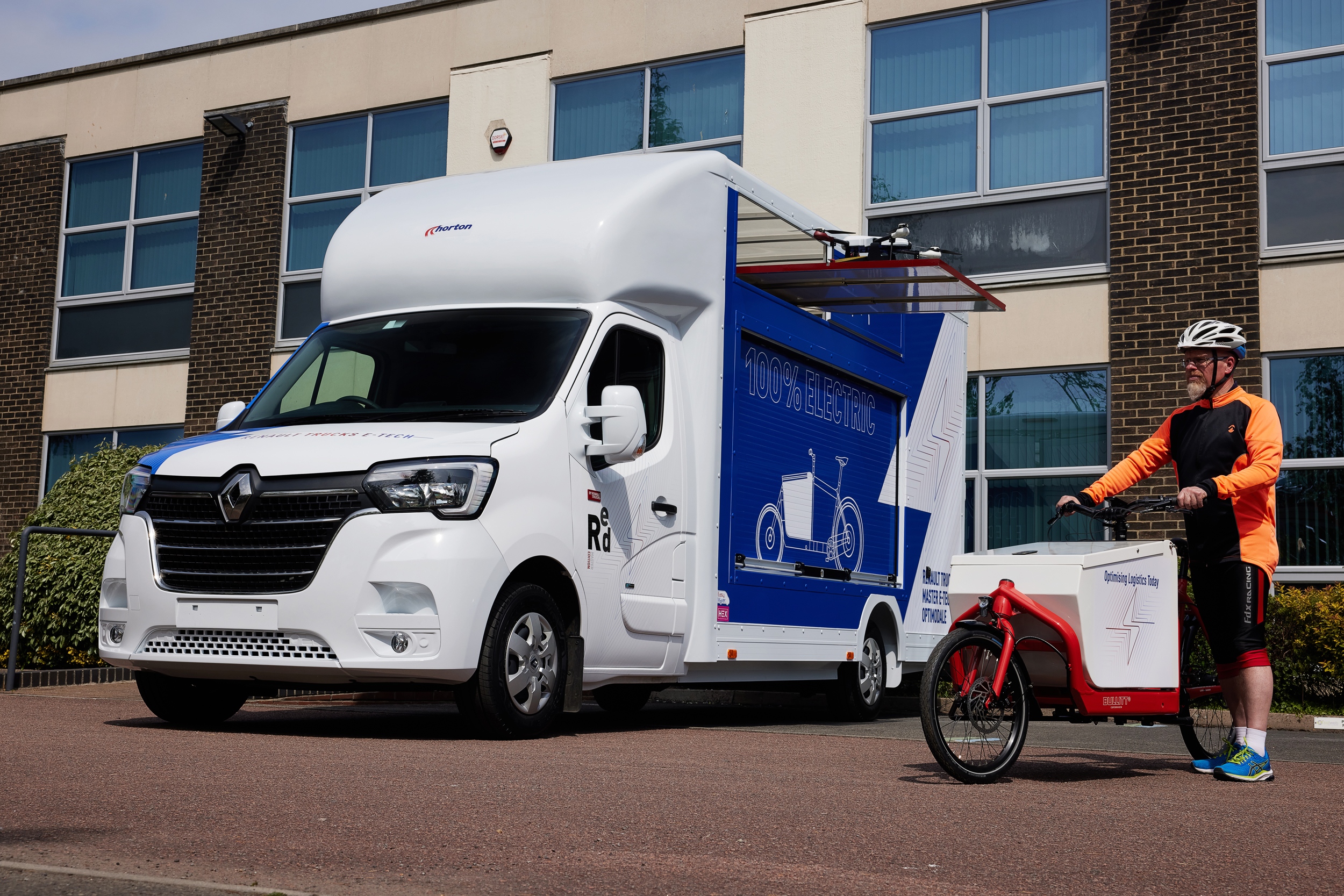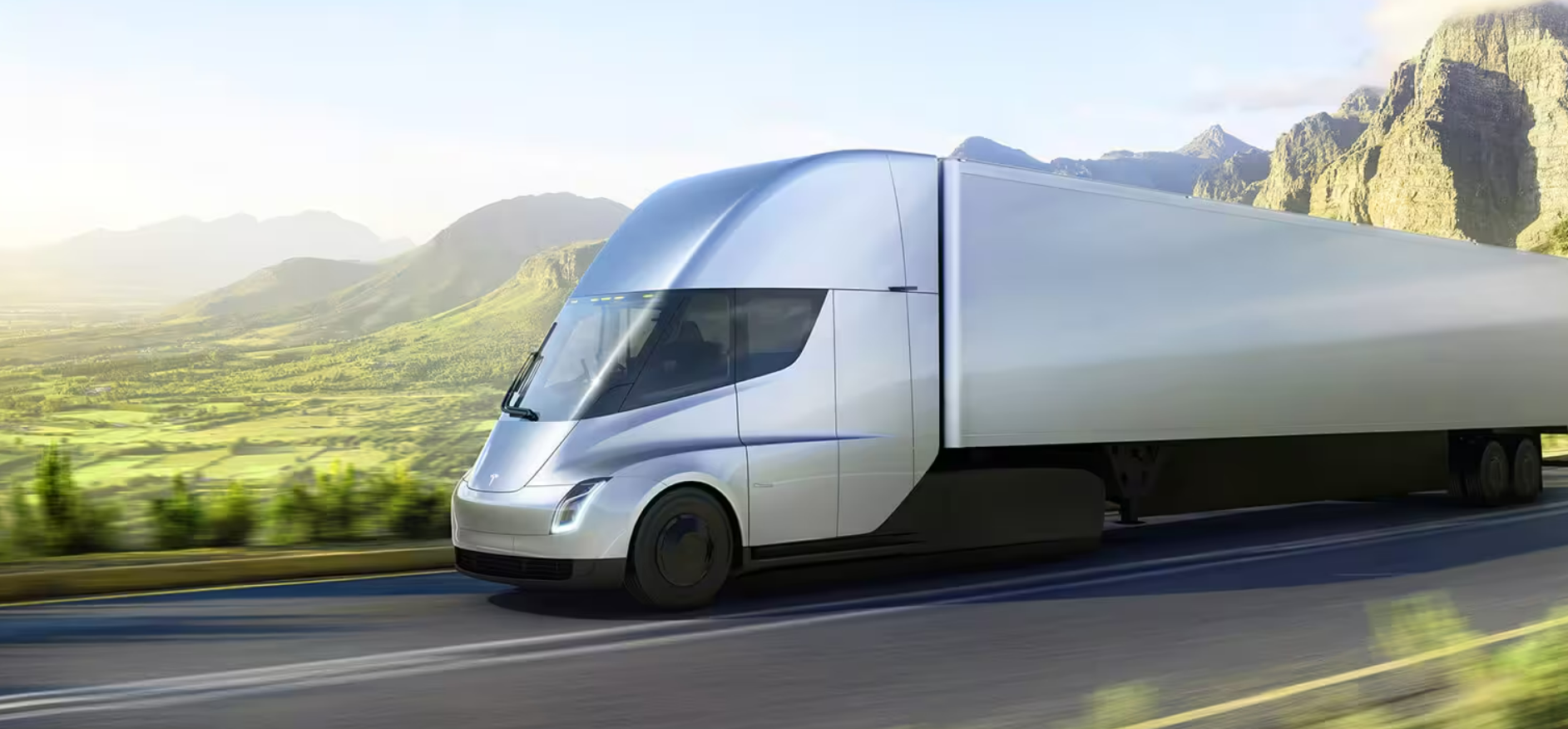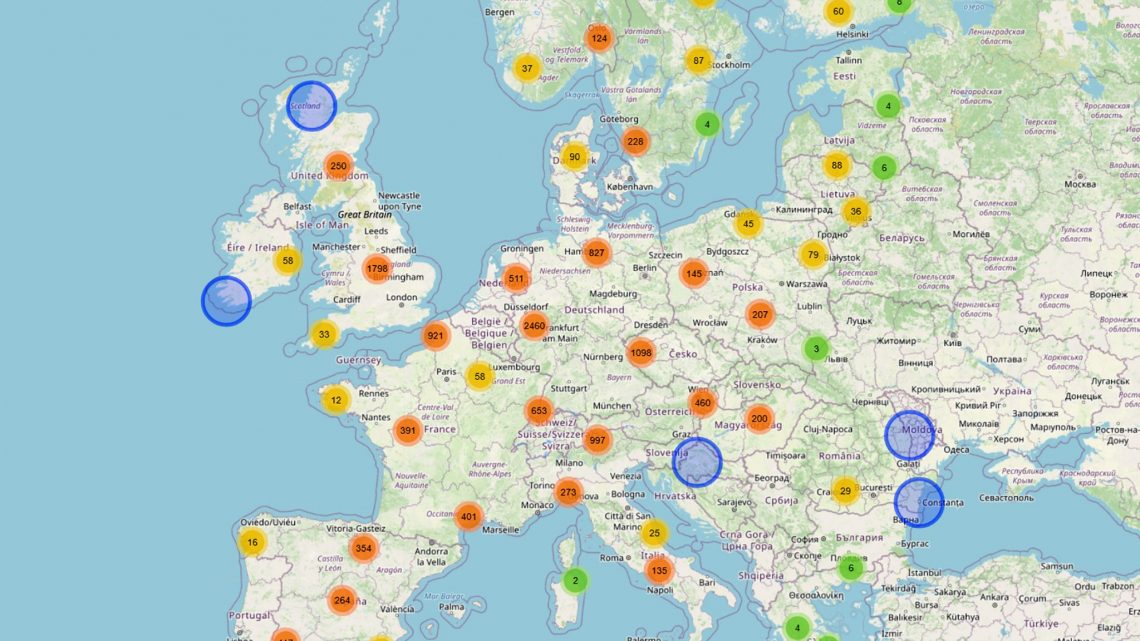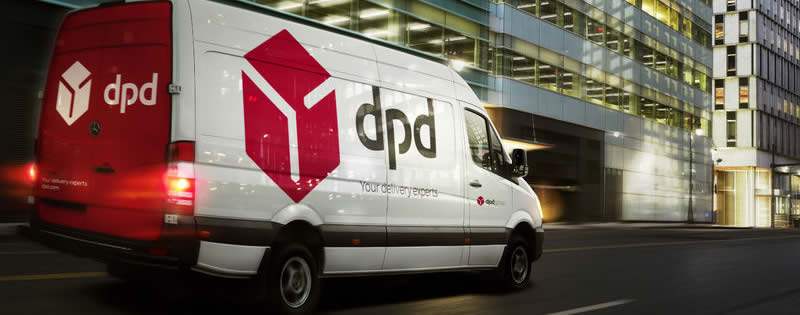Welcome to the first edition of our new monthly Electric Vehicle & Alternative Drivetrain News Roundup, where we’ll be summarising and assessing our favourite bits of news worldwide pertaining to a wide range of eco-friendly vehicle types.
In this month’s May edition Renault Trucks, Tesla, DPD, the UK Government, the European Automobile Manufacturers’ Association (ACEA) and the Association of Fleet Professionals (AFP) share the headlines, as each entity continues to find innovative ways to decarbonise our roads.
Renault Trucks unveils the E-Tech Master OptiModale
Renault Trucks unveiled the E-Tech Master OptiModale, an industry-first multimodal e-mobility concept that combines a battery-electric van with an electric cargo bike and a parcel-carrying drone.

The company believes the solution is the first multimodal e-mobility concept for inner-city deliveries that is suitable for a wide range of logistics operations and delivers parcels of various sizes:
“The E-Tech Master OptiModale is a two-person operation, offering the flexibility of delivering larger parcels by van, whilst the second team member takes the eBullitt cargo bike for last mile deliveries where congestion is at its worst.” – Grahame Neagus, Head of Light Commercial Vehicle (LCV) at RT.
Research conducted by the World Economic Forum found that growing demand for e-commerce delivery will result in 36% more delivery vehicles in inner cities by 2030, leading to a rise in both emissions and traffic congestion without effective intervention.
The E-Tech Master OptiModal addresses the pressing need for greener and more accessible last-mile deliveries in urban areas where congestion and pollution are most prevalent.
Tesla extends deposits for the Tesla Semi to the UK
The UK joined the USA, Canada, the Netherlands and Norway on the list of countries where deposits for the Tesla Semi are now accepted, despite there being no indication as to whether or not the vehicle will comply with European legislation, or when deliveries may occur.
The Tesla Semi is the manufacturer’s flagship all-electric battery-powered Class 8 semi-truck truck and Tesla’s first foray into non-consumer vehicles.

Tesla’s 2020 impact report revealed that combination trucks are a major source of emissions in the United States.
They account for just 1.1% of the United State’s vehicle fleet, but a significant 17% of the fleet’s overall emissions.
The Tesla Semi is their solution to this statistic, as they continue to accelerate the world’s transition to sustainable energy via their flagship zero-emissions freight-hauling vehicle.
It boasts a 500 mile range at gross vehicle weight at highway speed, and has ‘the lowest energy cost per mile’ when compared to traditional freight-hauling vehicles.
Tesla also claims that the Tesla Semi has ‘electric energy costs (that) are half those of diesel’. With fewer systems to maintain, the Tesla Semi provides £160,000+ in fuel savings and a two-year payback period.
UK buyers can reserve their Tesla Semi by making an immediate payment of £4,000, plus a bank transfer of another £11,000 within 10 days. Reservations are not final until the wire transfer payment is received.
New data advises governments and infrastructure operators across the EU where to prioritise installing charging points for electric trucks.
Analysis conducted by Fraunhofer Institute for Systems and Innovation Research ISI on behalf of the European Automobile Manufacturers’ Association (ACEA) has pinpointed the precise locations of the most frequented truck stop locations in 29 European countries.

The study analysed the GPS coordinates of 400,000 trucks in operation throughout Europe over a 12 month period, and took into account which individual locations were visited most frequently, and the duration that the drivers stopped there for.
By factoring in the different stopping times of the trucks it considers the charging needs of the vehicle – such as the time available for a full recharge and the required power output.
The analysis found that 10% of the most visited locations by trucks in Europe (over 3,000) account for some 50% (78,000) of the total number of stops that every truck makes.
Taking this data into account, the ACEA has encouraged national governments to ensure that the top 10% truck stop locations within their respective countries are equipped with suitable electric chargers by 2027.
Martin Lundstedt, Chairperson of ACEA’s Commercial Vehicle Board and CEO of Volvo Group elaborates on the significance of the study:
“Battery electric trucks will play a major role in decarbonising road freight transport. If enough charging stations are rapidly installed across the EU, their market uptake will increase exponentially over the coming years… Given that charging stations that are suited to the specific needs of trucks are almost completely missing today, the challenge ahead is huge. That is why we want to help governments and industry stakeholders to direct their investments to where they are most needed.”
New AFP Map Shows National Demand for Fleet Van Kurbside Charging Charging for the First Time
In a similar vein to the Fraunhofer Institute for Systems and Innovation Research ISI analysis, the Association of Fleet Professionals (AFP) in cooperation with Field Dynamics, have published a map which pinpoints where UK businesses need kerbside charging by factoring in their vicinity to the homes of company van drivers.
The map produced by net-zero analytics consultancy Field Dynamics shows where drivers employed by AFP member companies need kerbside charging in order to adopt an electric vehicle.
Field Dynamics’ Business Solutions Director Charlie Gilbert commented:
“We’ve created the data based on a driver having space for a typical electric van – in this case, a Vauxhall Vivaro E – looking at 28 million homes in 408 lower level local authority areas. The map shows overall driver footprint demand with more detailed statistics about higher and lower kerbside charging need areas.”

Map provided by Field Dynamics
The underlying database contains 75,000 records and the map and statistics are aggregated to local authority level.
£200 million boost to rollout of hundreds more zero-emission HGVs
UK Transport Minister Trudy Harrison revealed over £200 million of government funding will be injected into an extensive zero emission road freight demonstrator programme to create the ‘world’s largest fleet of zero emission heavy goods vehicles (HGVs)’.
The UK government has decided to accelerate its plans to eliminate fossil fuels from HGV haulage in a bid to reduce delivery costs and protect consumers from rising fuel prices.
The 3-year comparative programme will begin later this year and the transition to zero-emission trucks will also help improve air quality, create greener jobs and deliver on COP26 pledges.
Transport Minister Trudy Harrison stated:
“We must accelerate our journey towards our net zero goals, and we’re committed to leading the way globally on non-zero emission road vehicles. Our ambitious plans will continue to ensure food is stocked on the shelves and goods are supplied while eliminating fossil fuels from HGVs and making our freight sector green for good.”
DPD ahead of target on all-electric deliveries as roll out continues
One of Europe’s leading parcel delivery brands DPD has confirmed that it now provides an all-electric service to 10 towns and cities across the UK, and they have ambitious plans to add 30 more locations by 2024.

DPD are seemingly ahead of schedule in their plans – in October 2020 they announced plans to operate their all-electric service in 25 towns and cities in the UK by 2025.
The service currently operates in 11 locations: Bradford, Bristol, Cardiff, Hull, Newcastle, Nottingham, Oxford, Reading, Southampton, Stoke and Bicester.
With 15 more Birmingham, Brighton and Hove, Cambridge, Coventry, Derby, Edinburgh, Glasgow, Leeds, Leicester, Liverpool, London, Manchester, Plymouth, Portsmouth and Sheffield are set to be the next towns and cities to achieve an all-electric status by 2023, two years ahead of schedule.
DPD has invested over £90m on all-electric vehicles in the UK, including the most recent order of 1,000 Ford E-Transit vans in May 2022, which will take its electric vehicle fleet to over 2,500.
The company, which hasn’t bought a diesel van since summer 2020, expects to deliver 26 million parcels this year (2022) on electric vehicles, saving 7,200,000kg of CO2 through the utilisation of alternative drivetrains in the process.
Elaine Kerr, DPD’s UK chief executive stated:
“I’m absolutely delighted to confirm that we now have 10 UK towns and cities being delivered by an all-electric DPD fleet. One of our big aims is to be the UK’s most sustainable delivery company and by the end of 2023, we will have over 5,000 EVs on the road and 30 urban centres delivered on all-electric vehicles.”
Articles referenced:
Tesla opens order book for its Semi to UK buyers
Electric trucks: new data maps out priority locations for charging points
Industry First For Last Mile Deliveries: The New Renault Trucks E-Tech Master Optimodale
New AFP Map Shows National Demand for Fleet Van Kurbside Charging Charging for the First Time
£200 million boost to rollout of hundreds more zero-emission HGVs
DPD ahead of target on all-electric deliveries as roll out continues





